Kuznetsky Most Street
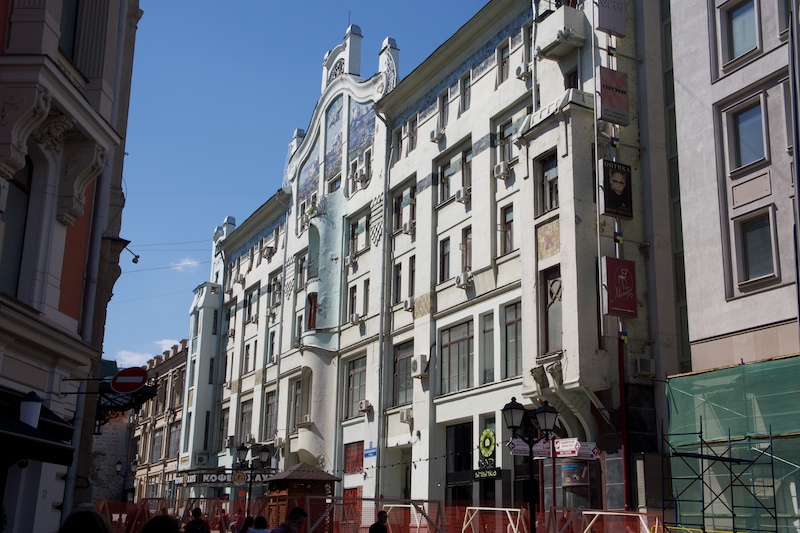
Sokol Building
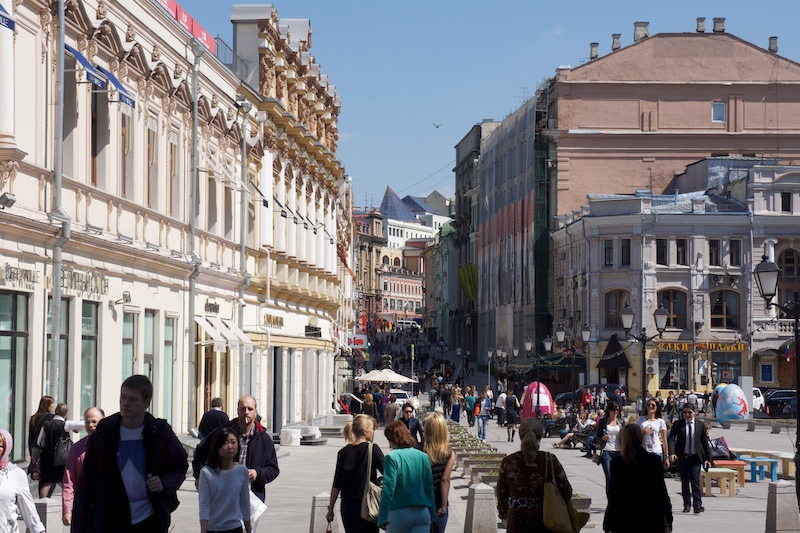
Kuznetsky Most Street
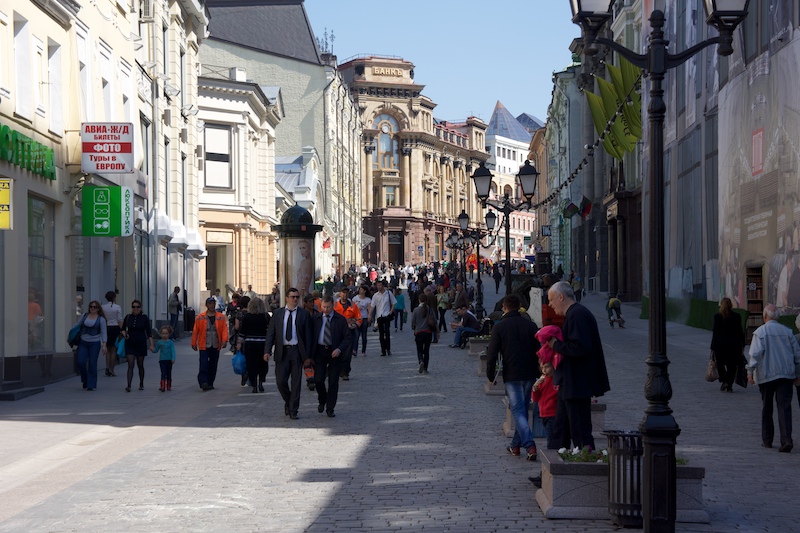
Kuznetsky Most Street
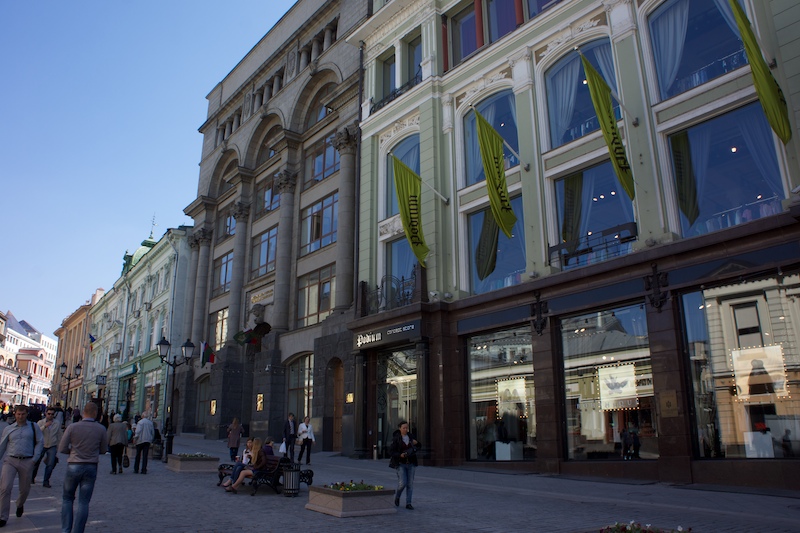
Kuznetsky Most Street
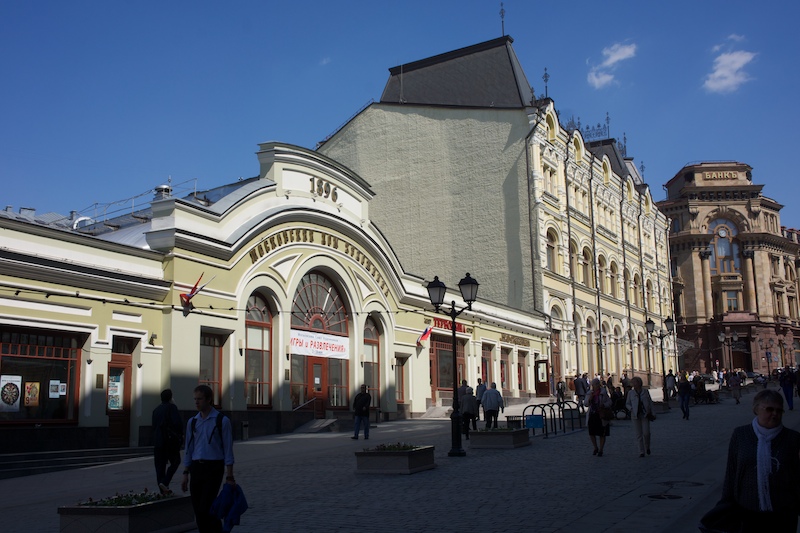
Kuznetsky Most Street
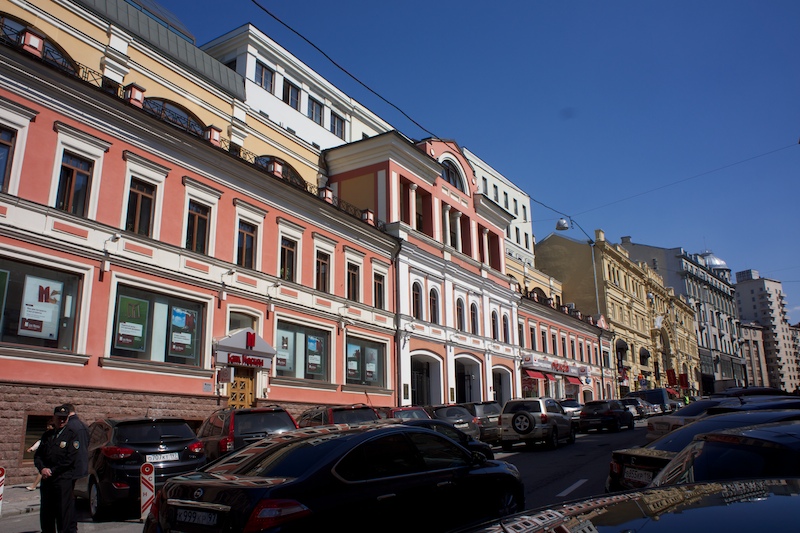
Kuznetsky Most Street
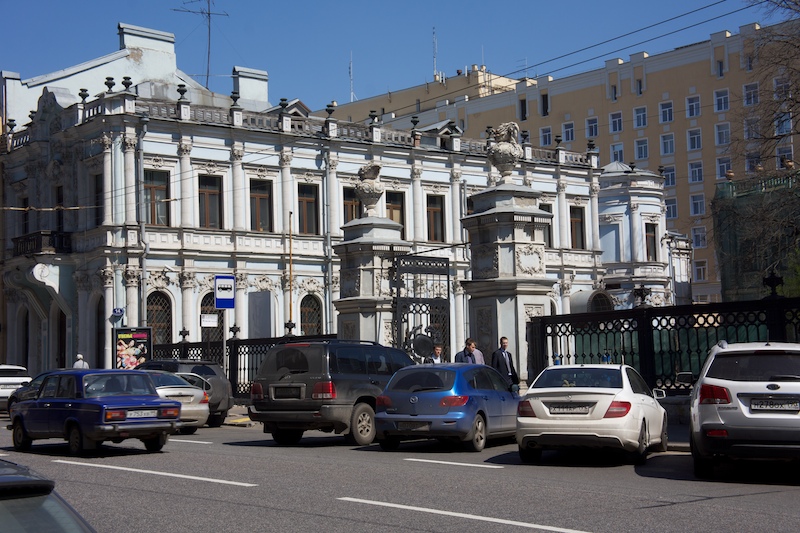
Kuznetsky Most Street
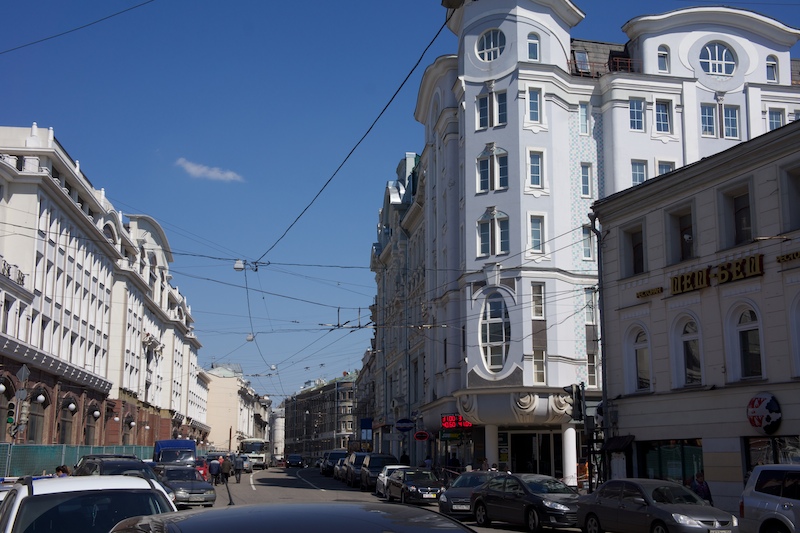
Kuznetsky Most Street
Kuznetsky Most is a street in central Moscow, that runs from Bolshaya Dmitrovka Street to Lubyanka Street. The name, literally Blacksmith's Bridge, refers to the 18th-century bridge over Neglinnaya River, now running in an underground tunnel, and a nearby foundry and the settlement of its workers. Since the middle of 18th century, Kuznetsky Most was the street of fashion and expensive shopping.
Early history
Until the end of 15th century, Moscow was growing eastward, into Kitai-gorod. Prince Ivan III of Russia established his arsenal in the west, beyond Neglinnaya river. Later, he also set up a settlement of former Pskov residents, abducted from their hometown after the wars of 1480s. Population grew slowly until the 1737 fire which razed the area.
The Bridge
Soon after the fire, the territory was built out with upper-class buildings and shops. Large territories north from the street were consolidated by the Vorontsov family estate. In 1754-57, architect Semyon Yakovlev built a stone bridge over Neglinnaya River to a design by Dmitry Ukhtomsky. The bridge over Neglinnaya lowlands extended 120 meters long and 12 meters wide; the shops between Kuznetsky Bridge and Vorontsov lands where literally standing on the edge of this bridge. The street was known as the home of notorious Darya Saltykova (1730-1801), condemned to life in prison for torturing her slaves.
19th century
The Fire of Moscow (1812) spared Kuznetsky Most, where Napoleon's Guards were stationed in defense of French colony in Moscow. In 1817-1819, the city locked Neglinnaya River in an underground tunnel and demolished the redundant bridge - excluding its norther wall that supported surviving buildings. Soon, the French colony returned and Kuznetsky Bridge became the street of bookstores, fashion and upper-class shopping, mostly managed by the French. Kuznetsky Most became the symbol of French influence on Russians, immortalized in Woe from Wit by Alexandr Griboyedov.
After Emancipation reform of 1861, Kuznetsky Most became the financial center of Moscow, with historical Juncker Bank Building and Dzhamgarov Bank built in 1890s. Art Nouveau landmark by Ivan Mashkov, the Sokol building (3, Kuznetsky Most) was built in 1903-1904. However, at that time its address was Kuznetsky Lane: the part of Kuznetsky Most west of Petrovka Street was then known as Kuznetsky Lane; two streets were merged only in 1922.
Modern history
In 1920s the Bolshevik administration demolished the church on the corner of Kuznetsky Most and Lubyanka Street, creating Vorovsky Square. Nearby blocks were gradually converted to KGB offices after World War II; the blocks facing Lubyanka Square were torn down to make way for the Ministry of Merchant Fleet and Alexey Dushkin's Detsky Mir department store. Both these buildings were recently rebuilt. Since the 1980s, the street reacquired its status as an upper-class shopping lane, notably with rebuilding of Roman Klein's historical TsUM store. Among cultural institutions located on the street are the Moscow Operetta Theater, Kuznetsky Most Exhibition Hall, as well as two major state libraries.
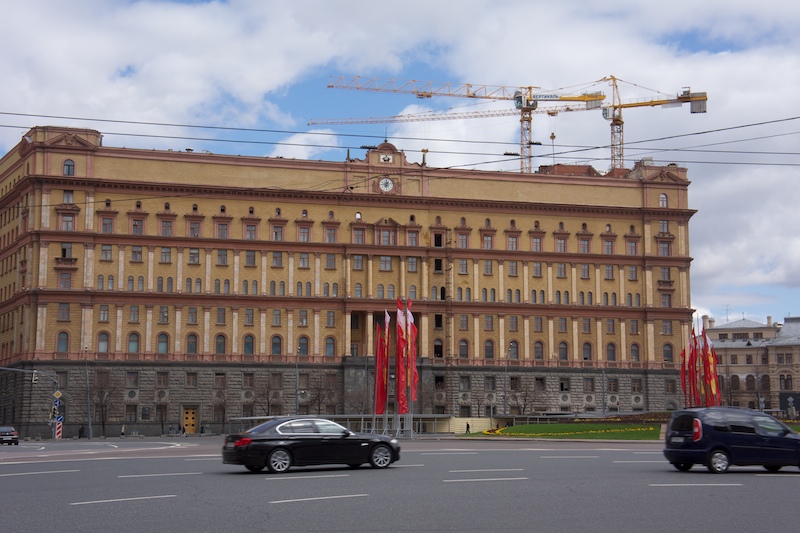
Loubianka
La Loubianka est le nom d'un immeuble situé à Moscou en Russie, sur la place homonyme. Construit en 1898 par l'architecte Alexander V. Ivanov dans le style néobaroque afin d'abriter le siège de la compagnie d'assurance « Rossia », l'immmeuble possède deux façades, une sur la place, l'autre donne sur la rue Bolchaïa Loubianka. Il est célèbre pour abriter le quartier général des services de renseignement soviétiques, puis russes (FSB), ainsi que la terrible prison qui s'y trouvait.
Au moment de la Révolution d'Octobre en 1917, lors du transfert du pouvoir de Pétrograd à Moscou, la Tchéka s'installa dans un premier temps, le 30 mars 1918, dans un hôtel particulier de la rue Povarskaïa abritant jusque-là le siège d'une autre compagnie d'assurance, Iakor. Ce n'est qu'au début des années 1920 qu'elle prit ses quartiers au nº 2 de la rue Bolchaïa Loubianka.
Le bâtiment de la « Grande Loubianka » contenait les bureaux des commissaires-enquêteurs, une prison interne de 115 cellules réparties sur 6 niveaux pouvant accueillir de 200 à 600 prévenus et des caves. Le sol des cellules était fait de parquet, et les portes ne comportaient pas de guichet (contrairement aux autres prisons) mais de simples judas. Les cours de promenades se trouvaient sur le toit de l'édifice et étaient isolées par de hautes palissades empêchant de voir autre chose que le ciel. À partir de 1930, la Loubianka devient une « prison exécutive » dans laquelle on exécute les condamnés à mort. Les caves sont alors aménagées pour l'exécution des sentences, ainsi que pour les séances de torture. En 1955, on agrandit l'immeuble par la construction d'un nouveau bâtiment tout aussi imposant que le premier, dont la façade lui est accolée.
L'édifice de la « Petite Loubianka », situé au no 14 de la rue Bolchaïa Loubianka, abritait les bureaux de la police politique de l'oblast de Moscou, qui possédait aussi une prison interne.
Les commentaires proviennent en partie de l'encyclop�die en ligne wikipedia